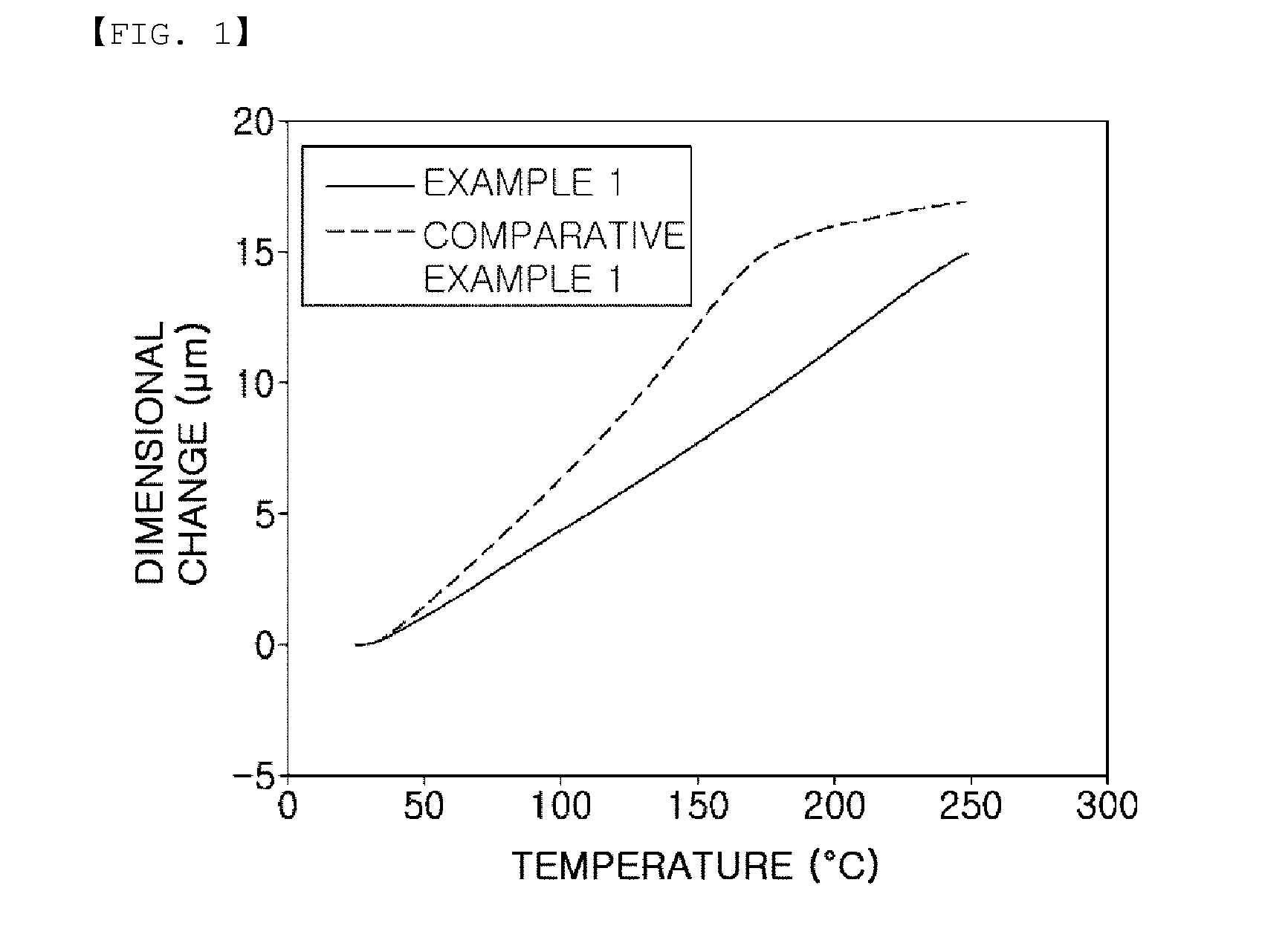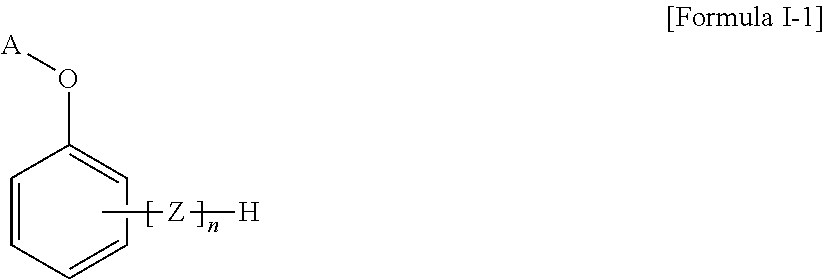Novel novolac curing agent with alkoxysilyl group, method for preparing the same, composition containing the same, the cured product, and use thereof
- Summary
- Abstract
- Description
- Claims
- Application Information
AI Technical Summary
Benefits of technology
Problems solved by technology
Method used
Image
Examples
synthetic example 1
Synthesis of a Silylated Phenol Novolac Curing Agent
[0190]In a flask, 15 g of a phenol novolac curing agent
[0191](Structural formula 1, Meiwa Plastic Ind.Co., trade name HF-1M), 8.67 g of triethoxysilyl propylisocyanate, and 150 ml of tetrahydrofuran(THF) were added thereto and mixed, followed by stirring at room temperature for 15 hours under argon gas. After a reaction, a solvent was removed using an evaporator, a silyated novolac curing agent with a concentration ratio of a hydroxyl group and a silyl functional group of a novolac curing agent, in other words, a ratio of [OH]:[Si]=3.9:1, was obtained. NMR data of the obtained final product are as follows.
[0192]1H NMR (400 MHz, DMSO): δ=9.43-8.93 (m, 3.89H), 7.71 (s, 0.97H), 7.26-6.51, (m, 20.71H), 3.94-3.55(m, 16.33H), 3.15-2.89(m, 2.57H), 1.62-1.44(m, 2.61H), 1.19-1.04(m, 11.98H), 0.66-0.43(m, 2.46H)
synthetic example 2
Synthesis of a Silylated Phenol Novolac Curing Agent
[0193]The same procedure was performed as described in Synthetic Example 1 except for using 11.44 g of triethoxysilyl propylisocyanate to produce a silylated phenol novolac curing agent with a concentration ratio of a hydroxyl group and a silyl functional group of a novolac curing agent, in other words, a ratio of [OH]:[Si]=2.6:1.
[0194]1H NMR (400 MHz, DMSO): δ=9.43-8.93(m, 3.11H), 7.71(s, 1.47H), 7.26-6.51(m, 20.21H), 3.94-3.55(m, 18.55H), 3.15-2.89(m, 3.57H), 1.62-1.44(m, 3.48H), 1.19-1.04(m, 15.09H), 0.66-0.43(m, 3.63H)
synthetic example 3
Synthesis of a Silylated Phenol Novolac Curing Agent
[0195](1) First Step:
[0196]In a flask, 10 g of a phenol novolac curing agent (Structural formula 1, Meiwa Plastic Ind. Co., trade name HF-1M), 3.74 g of NaOH, and 250 ml of DMSO were added thereto and stirred at room temperature for 30 minutes. Then, a temperature thereof was lowered to 0° C., 2.26 g of allyl bromide was added thereto, followed by stirring at room temperature for 2 hours. After a reaction, a reaction mixture was worked-up by using 400 ml of ethyl acetate and a saturated NaCl solution. An organic layer was separated and MgSO4 was added to the organic layer, thereby removing remaining H2O. The reaction mixture was filtered using a celite filter, and a solvent was removed by using an evaporator to produce an allylated novolac curing agent with a concentration ratio of a hydroxyl group and an allyl functional group, in other words, a ratio of [OH]:[allyl group]=4:1. NMR data of an obtained final product are as follows....
PUM
| Property | Measurement | Unit |
|---|---|---|
| Current | aaaaa | aaaaa |
| Current | aaaaa | aaaaa |
| Current | aaaaa | aaaaa |
Abstract
Description
Claims
Application Information
 Login to View More
Login to View More - Generate Ideas
- Intellectual Property
- Life Sciences
- Materials
- Tech Scout
- Unparalleled Data Quality
- Higher Quality Content
- 60% Fewer Hallucinations
Browse by: Latest US Patents, China's latest patents, Technical Efficacy Thesaurus, Application Domain, Technology Topic, Popular Technical Reports.
© 2025 PatSnap. All rights reserved.Legal|Privacy policy|Modern Slavery Act Transparency Statement|Sitemap|About US| Contact US: help@patsnap.com



